The slogan ‘Dig for Victory’ is well known and it was one of the Second World War’s most successful propaganda campaigns, mobilising the nation to grow its own food
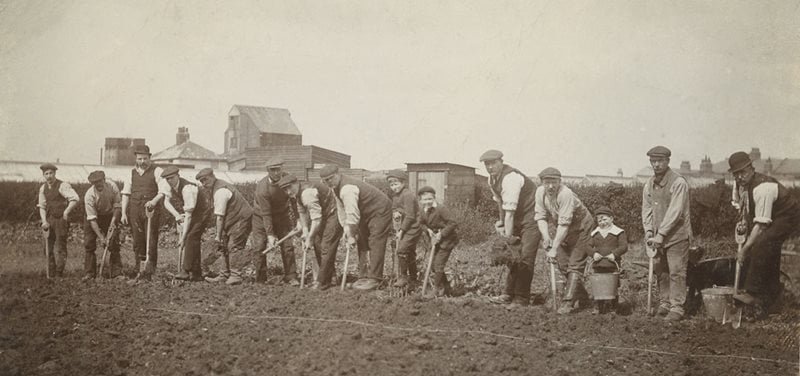
To mark the 80th anniversary of the outbreak of the Second World War the RHS Lindley Library decided to develop a display on the Dig for Victory campaign and the role the RHS played.
It began by putting out a public appeal to anyone who had photographs or memories of growing food during the war years. The responses give us a chance to see beyond the propaganda and the officially-worded advice, to get a sense of what ‘Digging for Victory’ actually felt and looked like for gardeners and growers.
The reality of the campaign was a highly personal one. Growing happened in people’s back yards and in their public parks and allowed them to feel they were making a real difference to the war effort. Digging brought together friends and family. These are all reasons that Dig for Victory continues to resonate today.
More than 40 people responded to the original appeal and kindly allowed the library to make digital copies of their precious family photographs, a few of these images are reproduced below.
These displays were held at the Lindley Library until 15 November 2019 and on outdoor panels at RHS Gardens from 14 October until 17 November 2019.
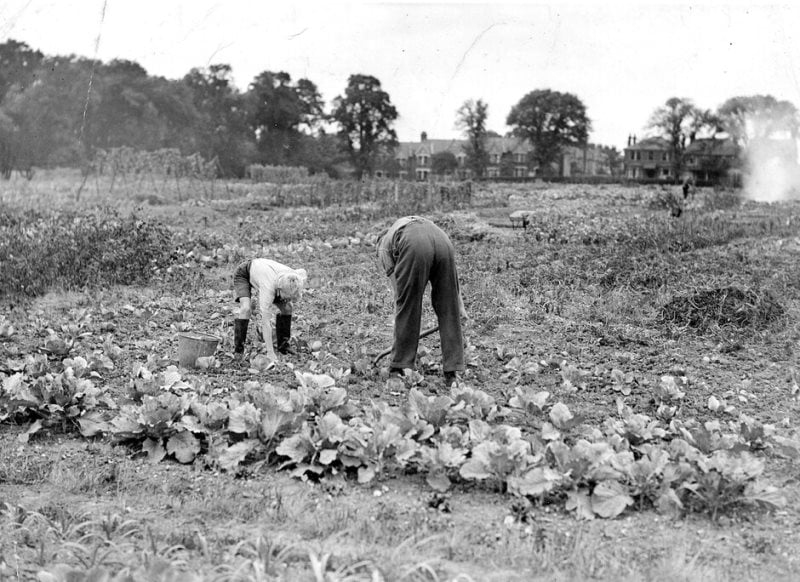
Geoff Stearn “My father and myself on his allotment in Valentines Park, Ilford about 1947. The photograph was exhibited in Ilford Town Hall under the heading of Dig for Victory.”
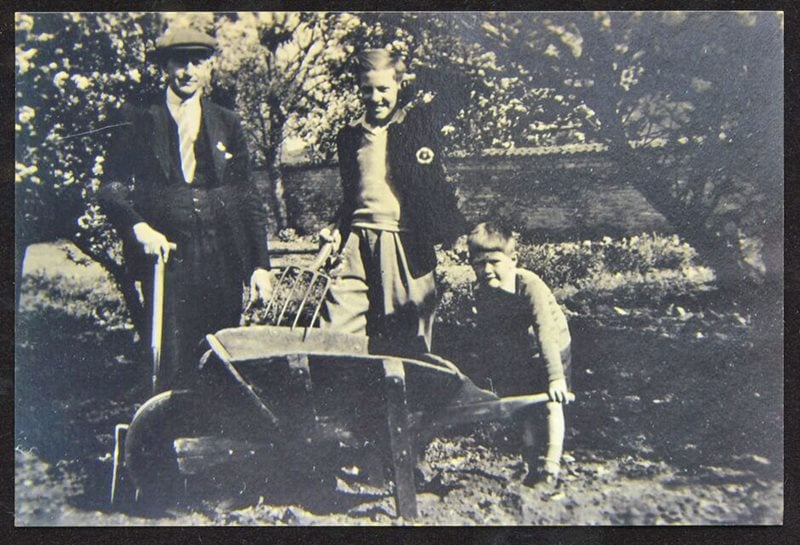
Jim Wilson “My brother and father in the garden of the Old Rectory, Irthlingborough, Northants, about 1944. I think that may be my father’s ARP badge on the lapel of his thee piece suit.’
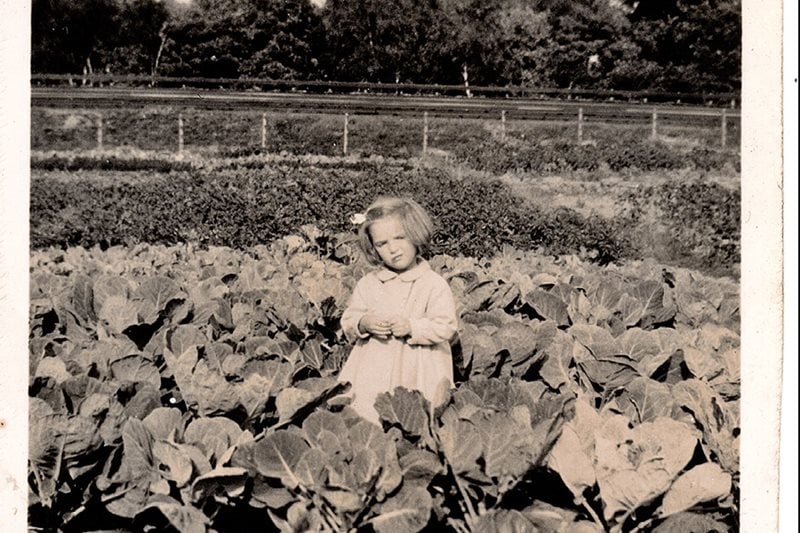
Catherine Regas remembers sitting among the cabbages on her father’s allotment plot, in Pett’s Wood, Bromley in South London.
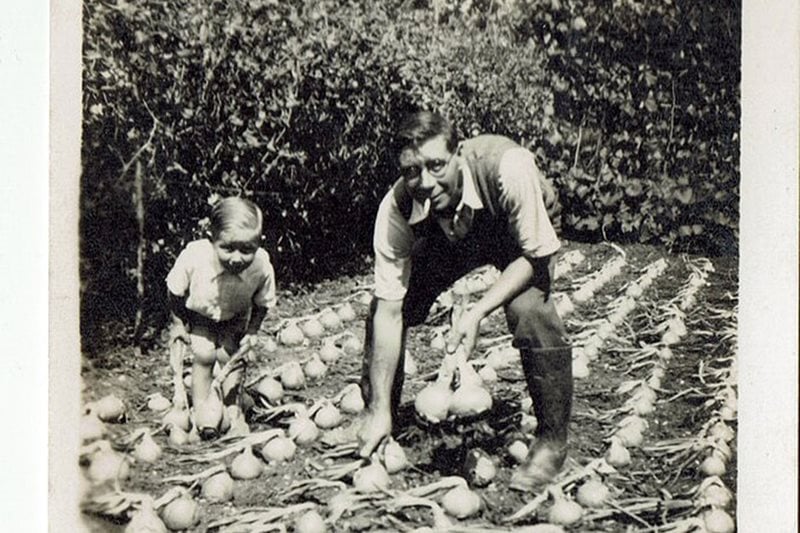
Roger Staker: “My father, Clifford Staker, and I in the onion patch at the isolation hospital, Bognor Regis. My father was head gardener there and grew fruit and vegetables for the patients and also for our own use. We were virtually self-sufficient.”
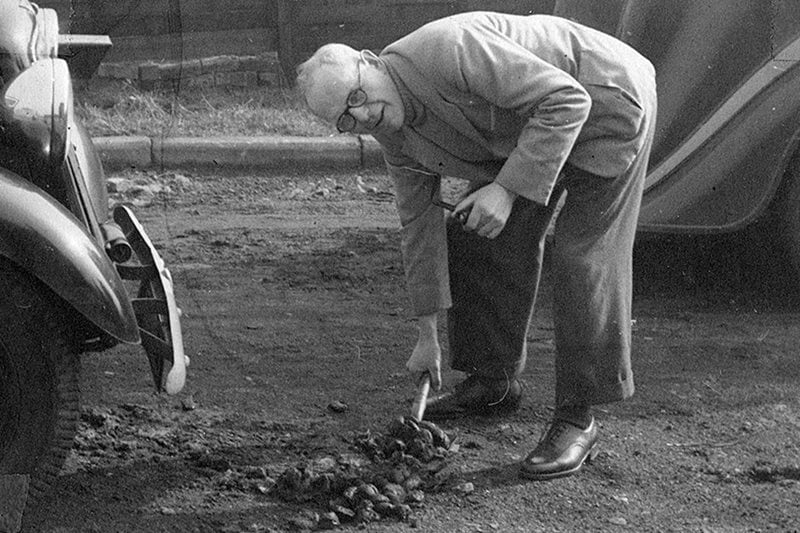 Betty Richards: “My father picking up horse muck for the garden.”
Betty Richards: “My father picking up horse muck for the garden.”
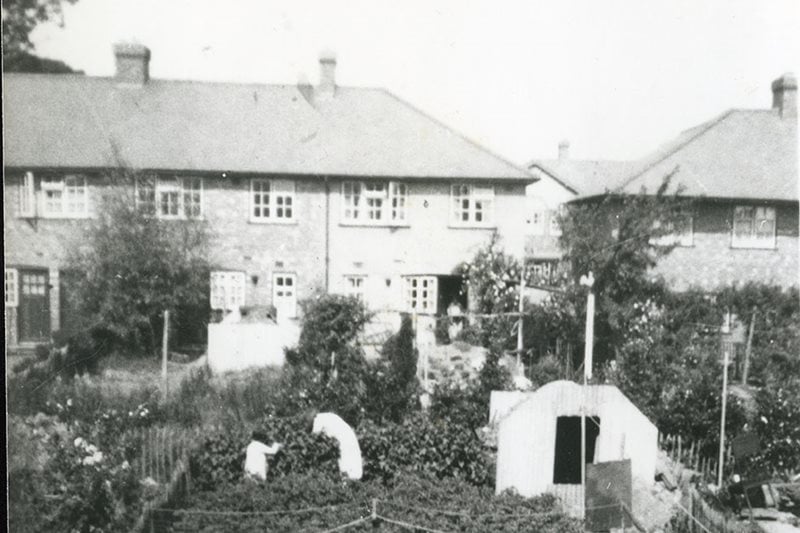
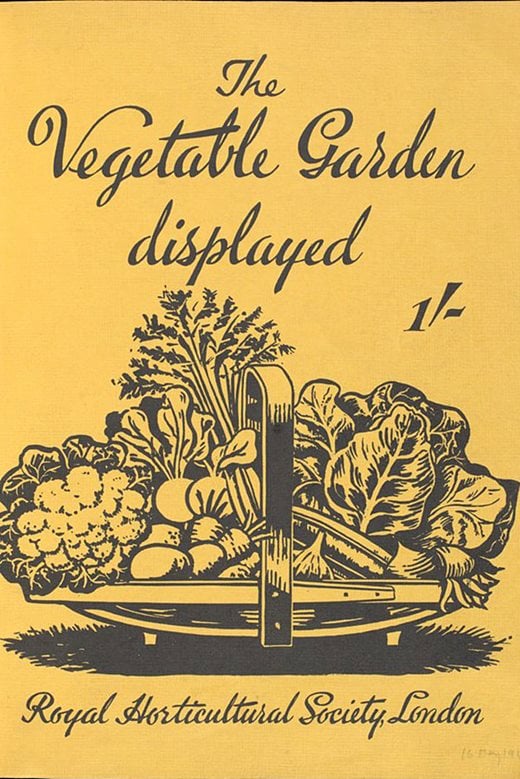 Freda Peach “My mother, Hilda, and sister, Lilian, in our council house back garden in Birmingham, 1940. My dad had a garden and an allotment. Our air raid shelter was flooded but the photo shows not an inch of wasted space.” Growers of all levels of experience relied on the RHS for advice, particularly a comprehensive booklet called The Vegetable Garden Displayed.
Freda Peach “My mother, Hilda, and sister, Lilian, in our council house back garden in Birmingham, 1940. My dad had a garden and an allotment. Our air raid shelter was flooded but the photo shows not an inch of wasted space.” Growers of all levels of experience relied on the RHS for advice, particularly a comprehensive booklet called The Vegetable Garden Displayed.
This cheaply produced softback booklet was to become the Society’s most successful publication of all time.
The photographs of digging and growing in the booklet were taken at Wisley. These images had been put to use as slides for gardening lectures across the country almost as soon as war broke out.
Later, they were transformed into travelling exhibition boards sent out to town halls, schools and other public spaces. Amazingly one set of boards survived the war and turned up more than 60 years later in a scout hut on the Isle of Wight.
Feature by Fiona Davison, Head of Libraries and Exhibitions.
You might also be interested in...
- Grow your own: Not sure where to start? We have all the tips and advice you need
- Digital collections: Discover some of the fascinating stories of our collections
- RHS Gardens: Indulge your senses with glorious days out to our five RHS Gardens

